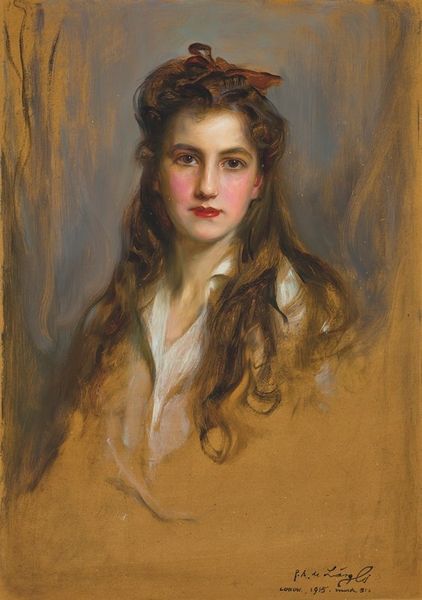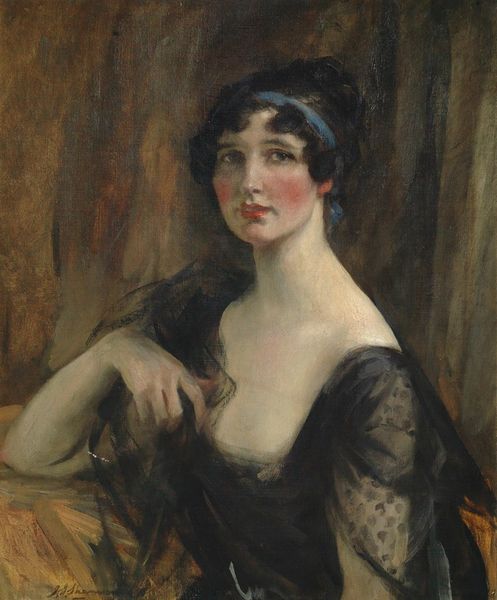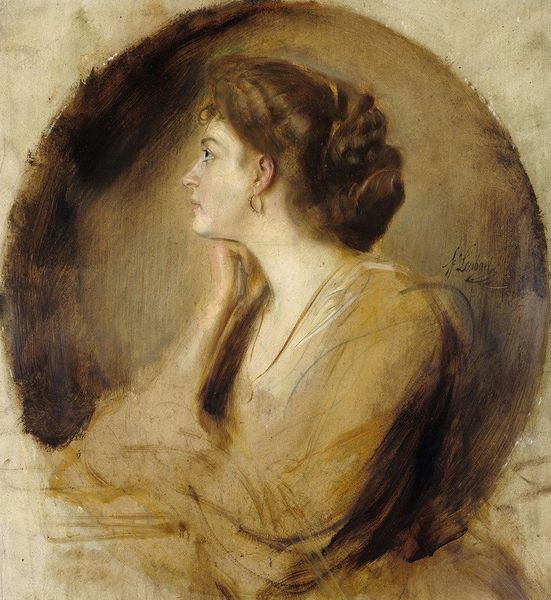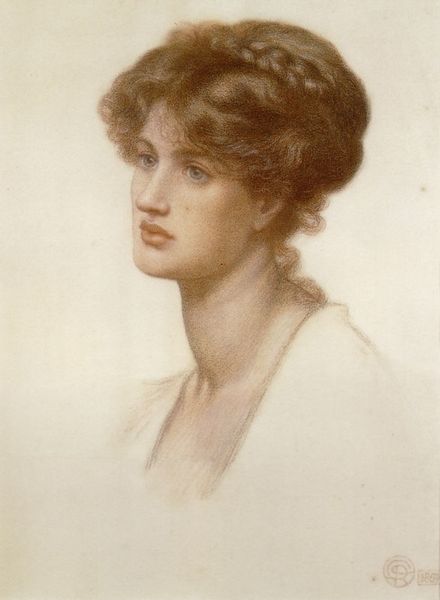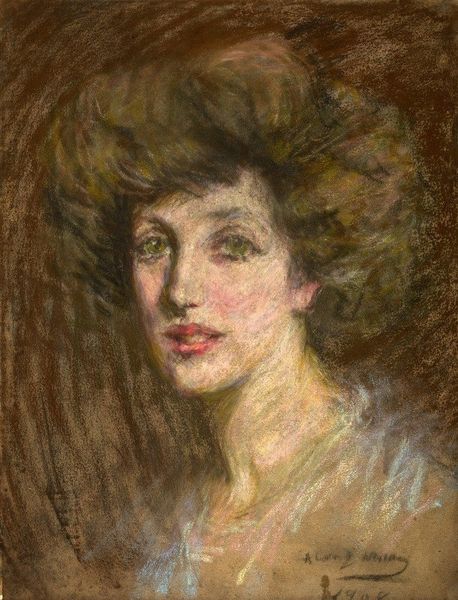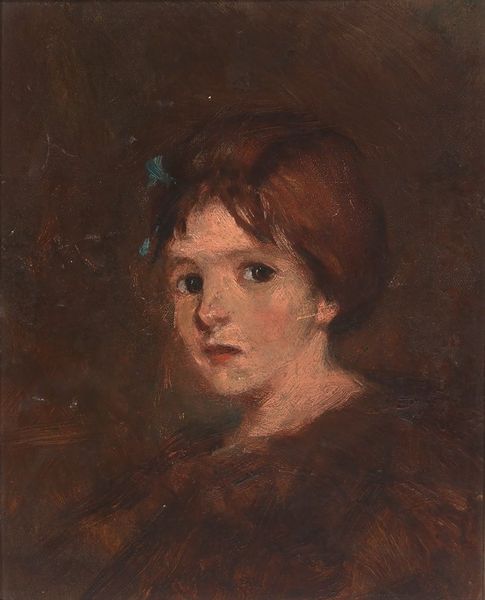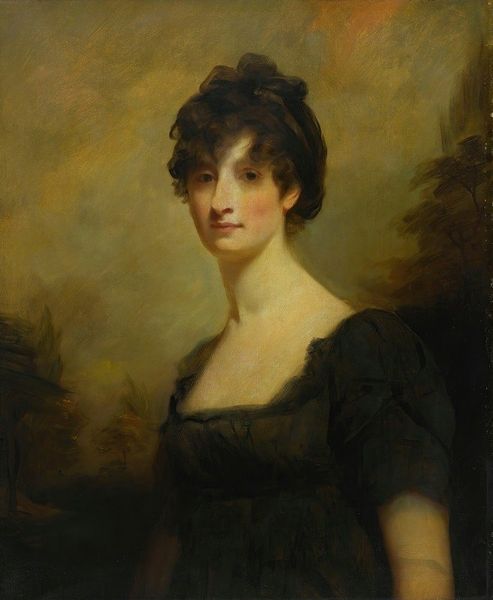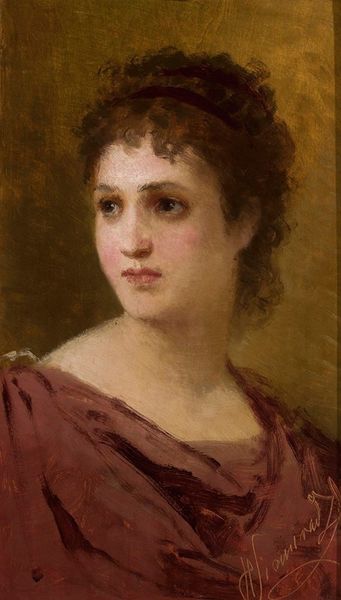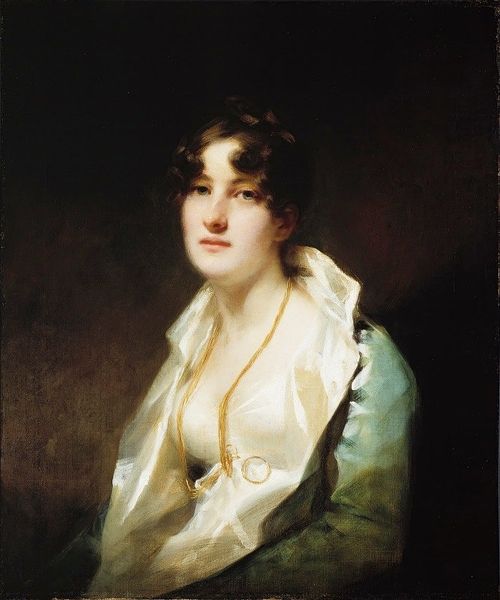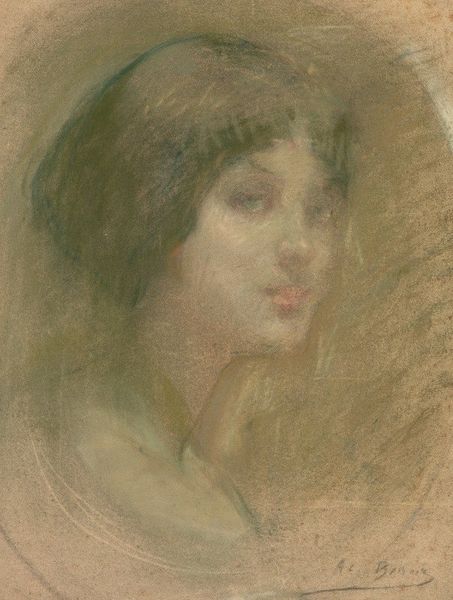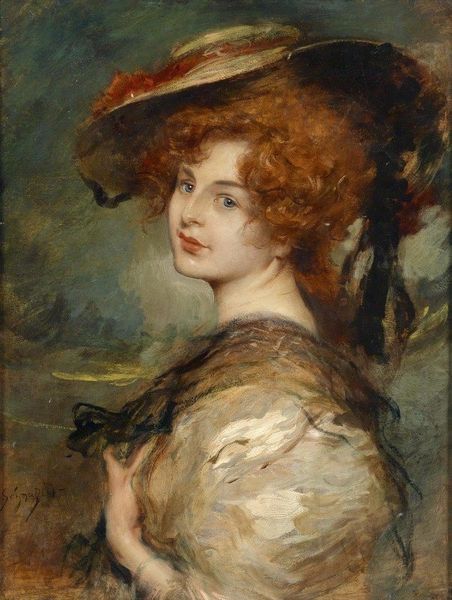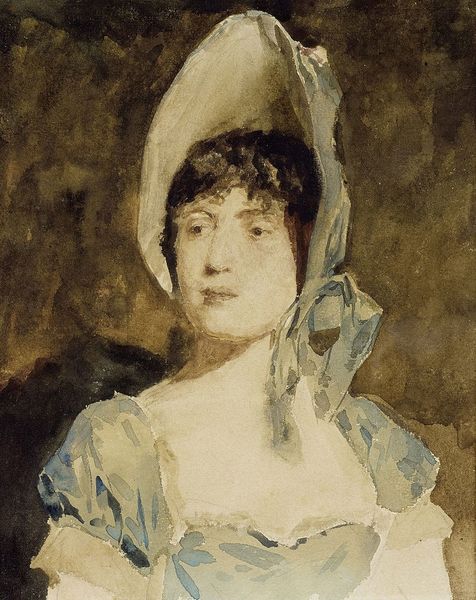
painting, oil-paint
#
portrait
#
neoclacissism
#
painting
#
oil-paint
#
oil painting
#
academic-art
Copyright: Public Domain: Artvee
Curator: Let's consider this evocative portrait of Lady Hester King, rendered circa 1805 by John Hoppner using oil paint. What's your immediate impression? Editor: My gaze is drawn immediately to her soft, yet melancholic expression, framed by the darker tones of her elaborate headwear and the loosely brushed golden background. It feels almost dreamlike. Curator: Indeed. Hoppner, a contemporary of Reynolds and Lawrence, captures a transitional moment here. Observe how the materiality of the paint and brushwork convey status, in both subject and artist. These brushstrokes suggest rapid execution but also the self-assurance to leave visible traces of production. Editor: Absolutely. And if we consider the formal qualities, the high contrast between the light illuminating Lady Hester's face and the darker, almost gestural marks surrounding her create a sense of depth, a push and pull that really emphasizes her features. Note also the minimal detail in her clothing drawing focus upwards. Curator: It’s crucial to examine the Neoclassical influence manifested in this work, but it doesn't simply adopt earlier stylistic features. Look at her attire: the relative simplicity in cut and line, reflects not just status but also a subtle shift towards early Romanticism where idealized notions of beauty intersected with an evolving socio-political climate. This impacts how Lady Hester would have been read in relation to shifts of class, and even nation. Editor: I'm interested by your comment about Romanticism, and agree it signals that changing mindset. While her composure is classicized, those dark washes speak of an inner world – a space beyond pure rationality or stately display. I wonder also, who Lady Hester was, in relation to this mode of visual construction, and whether the piece presents a social commodity for the viewer. Curator: Lady Hester, although belonging to the peerage through marriage, did not have substantial family wealth of her own and her later social influence arose mostly through powerful relatives like her uncle, William Pitt the Younger. Hoppner’s artwork might therefore highlight both aspiration, while implicitly gesturing towards changing material forces operating just beneath the surface. Editor: Yes, precisely – so much in this portrait seems balanced on that precise, almost unreadable, edge. Curator: These subtleties really show Hoppner’s understanding of period aesthetics in negotiating that changing environment. Thanks for those observations; it allows an important connection with a deeper investigation of visual form that contextualizes art production during turbulent social times. Editor: My pleasure. Considering this piece, there really is always something else to see each time you return to it!
Comments
No comments
Be the first to comment and join the conversation on the ultimate creative platform.
